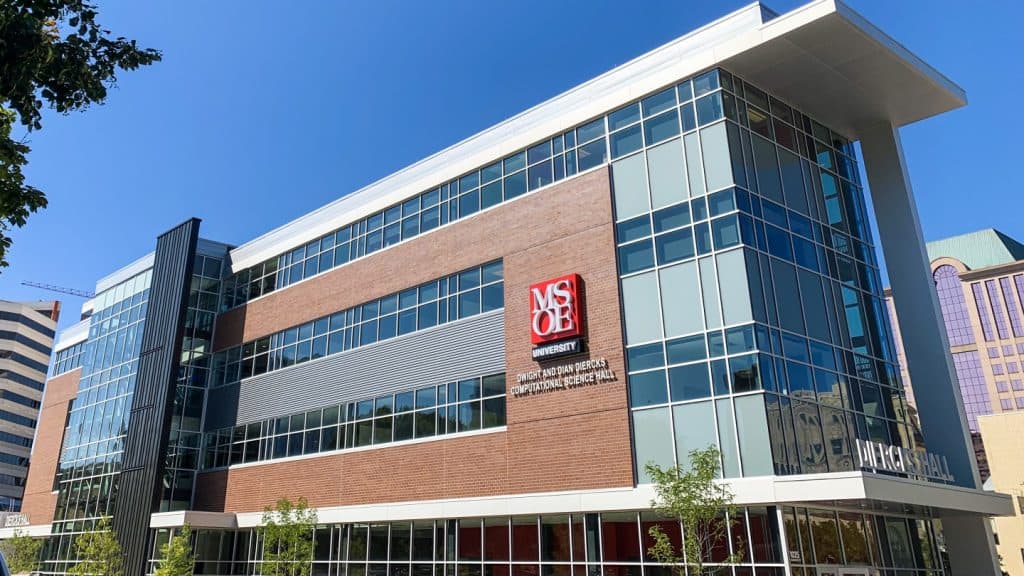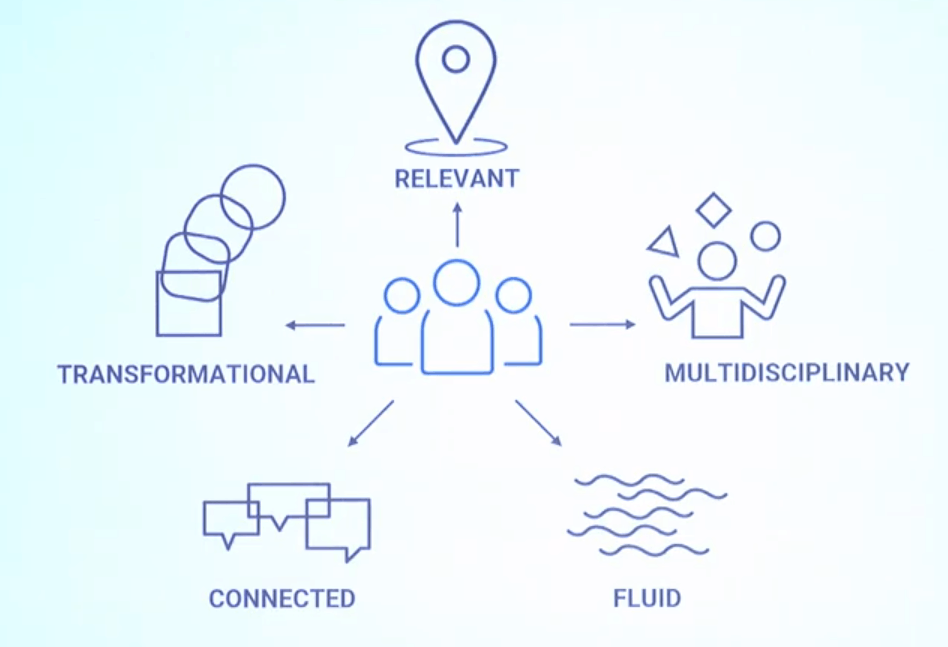Class Central is a media partner for LWMOOCs.
IEEE Learning with MOOCs VI: Meeting the People who Make the MOOCs
My takeaways from the conference’s sixth edition, which took place at the Milwaukee School of Engineering in October 2019.
I was a first time attendee at the sixth iteration of IEEE’s Learning with MOOCs conference held in October 2019 at the Milwaukee School of Engineering (MSOE) in Milwaukee, Wisconsin. I was there representing Esri and its MOOC Program, which I manage. (Why does a private software company offer MOOCs? I answered that question earlier this year.) I believe this was the smallest conference I’ve ever attended. There were just about 50 attendees! That said, these were the “right” 50 people to discuss the worldwide state of MOOCs. There were people from universities, governments, platform providers and private companies from among other countries, Uruguay, Singapore, Japan, Germany, India and Israel. A good number hailed from the United States including organizations using MOOCs in non-traditional ways. For example, Lincoln Labs, a defense/tech contractor based outside of Boston uses MOOCs for internal and contractor training. I was surprised to learn about a MOOC that teaches the basics of lasers by having students build one from a kit!
These are my takeaways from the conference:
The opening keynote speaker, Kerrie Douglas from Purdue, had us meet one another and then discuss some key MOOC topics in small groups. One takeaway for me what that the definition of a “good MOOC” varies depending on the goal of the provider and the student. Douglas cited a National Academy Press report of which I’d not heard: How People Learn II: Learners, Contexts, and Cultures that might be of interest to others who “make MOOCs.” The other point she made that was valuable to hear was that MOOC providers need to be realistic about having some students who are “fully engaged”, others who are “somewhat engaged” and a group that are “sporadically engaged.”
K. Holly Shiflett from MOOC platform provider and conference sponsor FutureLearn, suggested in her keynote that the responsibility for lifelong learning is moving from the employer to the learner. She described the “old model” of a high school diploma or single degree followed by employer training as all that was needed for a 40+ year career. The “new model” involves learner-directed lifelong learning. She divided learning options by their time span: from 5-60 minutes, 10-50 hour, 50-150 hours, to those that take a year or more that may lead to a certificate or degree.
Anant Agarwal, the CEO of edX, a sponsor, gave a “state of the art” keynote. (A video of his presentation is available on the IBLNews website, a conference media partner.) Agarwal noted that MOOC students seek different MOOC experiences. He described five:
- Relevant: acquire specific skills
- Multidisciplinary: broaden/find complementary skills
- Fluid: have learning be part of their lives
- Connected: be locked to a location/family but still learn
- Transformational: change themselves
Agarwal noted that employers are looking for a variety of skills in their new employees with about one third being soft skills. He noted too, that today about one third of Americans will change fields from their first job.
The delegates from India spoke about different components of the government initiative SWAYAM, a platform that offers free online college courses. Currently students can use the courses, once a fee-based exam is passed, for up to 20% of their degree credits. One course I learned about was aimed at introducing teachers to a variety of open source technologies that they might use in their classes. Students in that course were expected to create “lessons” with the technologies and then share them. Any MOOC that encourages students to create a valuable new product (a lesson, a research study, a software program, a laser, etc.) ranks above those that involve rote exercises in my book.
The delegate from Israel described the government initiative to provide free online preparation for the country’s college entrance exam, the Psychometric Entrance Test. The government wanted to level the playing field for lower income residents who could not afford existing fee-based face to face or online preparation courses. The solution is hosted on the country’s Open EdX implementation and with limited advertising generated a lot of interest and was judged by the students to be at least as good as, and often better than, the paid courses. The team behind the course even trialed an effort where students paid a small fee to also attend face to face sessions and have email access to a tutor. That was quite popular and successful, but alas does not scale.
A small company in Uruguay offers continuing education medical courses in Spanish and Portuguese. The courses fulfill requirements for continuing education for licensing in some countries (and are paid for by hospitals and other organization) but are also taken by medical professionals on their own dime. The company partners with experts on specific topics to develop and offer the latest information on specific medical topics.
The delegates from the Hasso Plattner Institute, home of the open HPI platform have a good deal of experience with MOOCs, since the platform dates back to 2012. One of their papers highlighted how a small change in the MOOC interface, changing the name of the button for the group chat, made a huge difference in student participation. That was a good reminder that no matter how good the content of a MOOC, small interface tweaks can make a significant difference in student experience.
One of the large group of students in attendance from North Dakota State University presented an interesting twist on finding topics for student projects. When it came time for students to identify project topics in Biomedical Engineering, a program with a “MOOC-ish” component, he pointed them to the listing of federal funding opportunity announcements to find a topic. I thought that was a clever way to have students find topics, tackle real world issues even as they networked! A good proportion of students found themselves invited to conferences and one even got a grant.
A few of the papers discussed the evaluation of language in MOOC content. I learned there are software tools to (1) evaluate the readability of course content, (2) embed definitions of terms in the course text and, (3) identify if the course content includes any gender stereotypes that might be reconsidered. I’ve not used such tools, but I am interested in seeing what they can do!
The final comment I want to share relates to the conference format. There were a handful of invited or sponsor-delivered keynotes of 45 minutes, but the paper presentations were just five minutes long. Each presenter also shared a poster covering the same content in a three-hour poster session on the first day. This format meant I was exposed to every accepted paper and spoke with nearly every attendee at least once. That’s not something I can say about too many other conferences!
Tags








